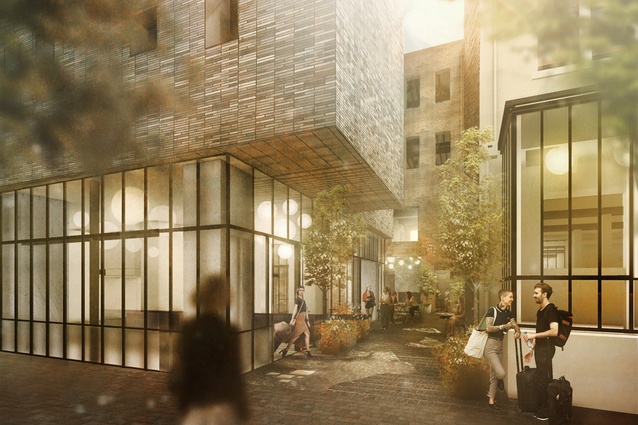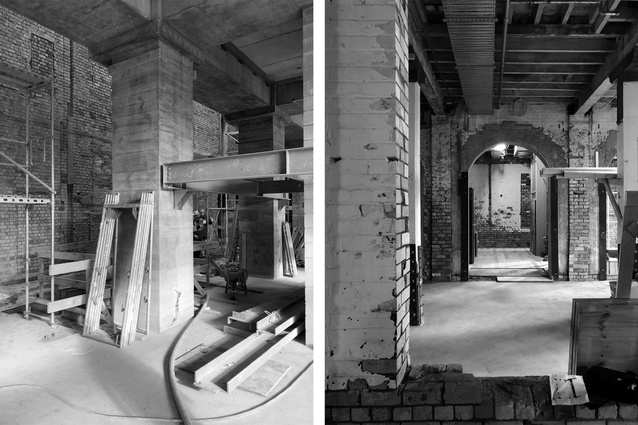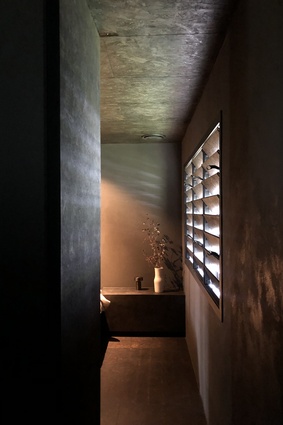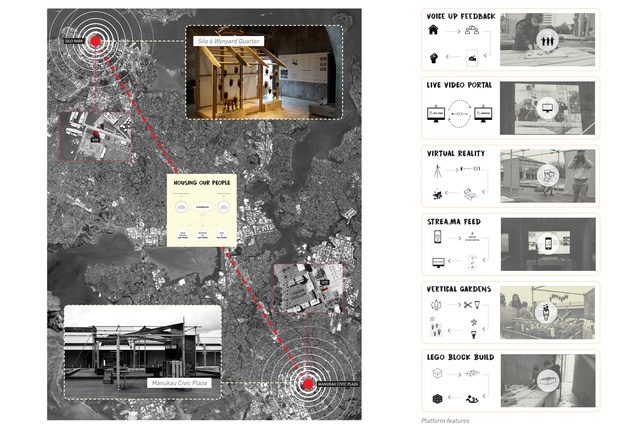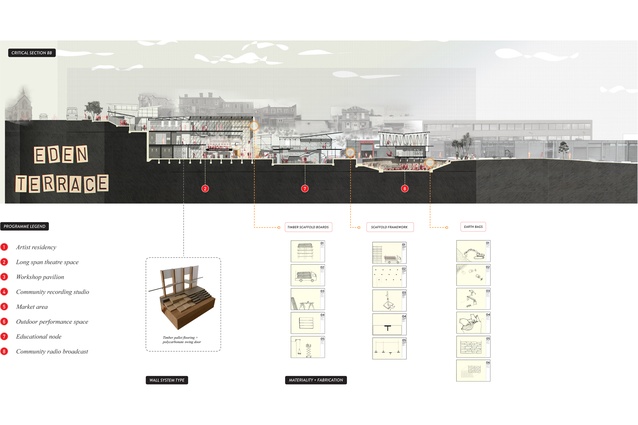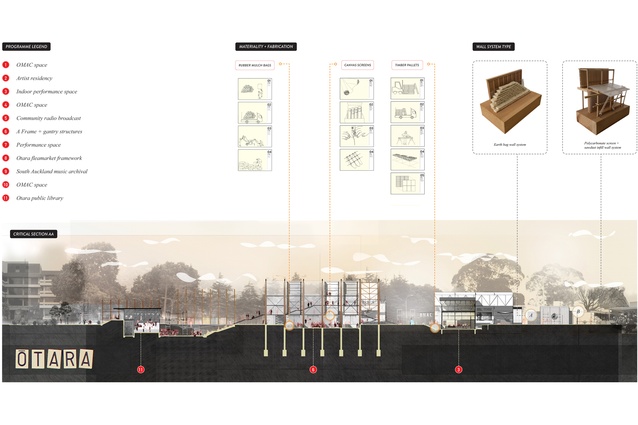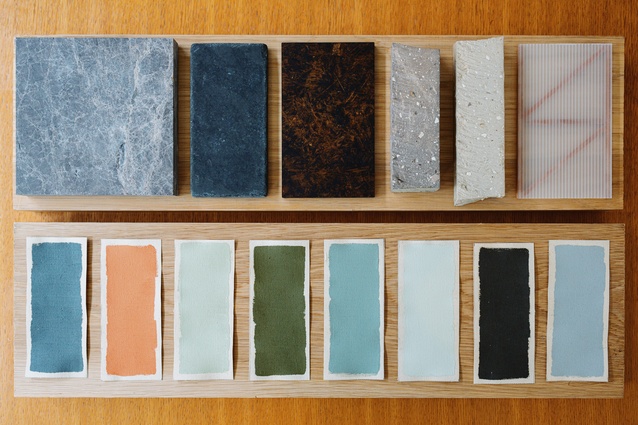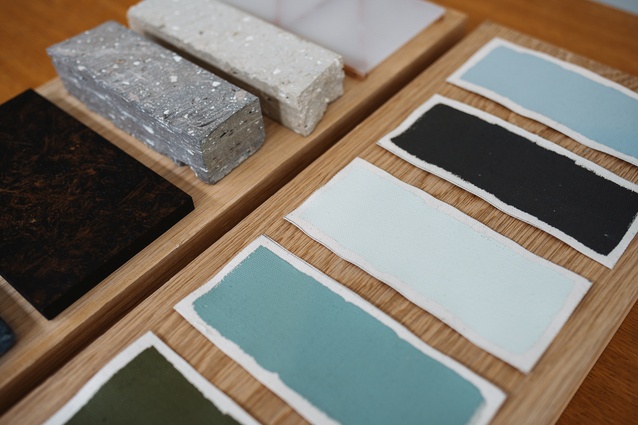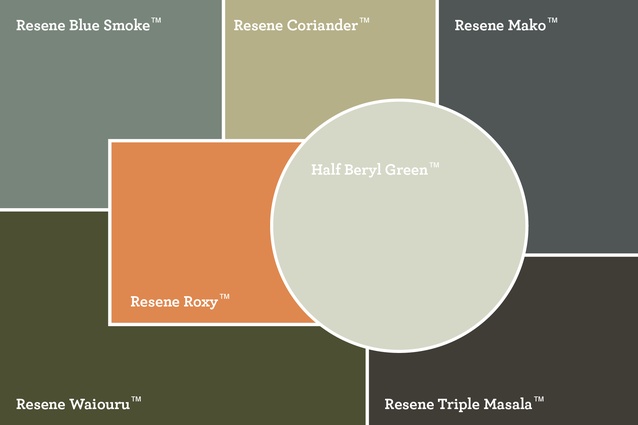On the Rise: Shaun Goddard
ArchitectureNow’s On the Rise series, supported by Resene, puts young designers from across the country in the spotlight. This month, we speak to a graduate at Cheshire Architects in Auckland who is equally passionate about social justice, indigenous culture and creating beautiful designs.
Ashley Cusick (AC): When did you first know that you wanted to pursue architecture as a career?
Shaun Goddard (SG): I suppose I’ve always been a visual and kinesthetic learner. That’s how I best digest information. I’ve always liked using my hands to make things and tinker, and I’ve always really enjoyed painting. My mum actually practiced as an architect for many years. So, she was one of the people to, if anything, warn me against the profession. But, she was obviously very supportive and understanding when I was foolish enough to pursue architecture. If you talk to any of my friends and family, it was by no means a linear process. There was lots of lateral movement, and I stopped for a little while then regained some momentum. Design is a pretty critical path for me, I think, and architecture has happened to satisfy a lot of my interests.

AC: It gives you that human aspect as well that you seem so passionate about. After studying at Unitec, you went on to work with a community organisation called The Roots. How did you get involved with them, and what drove you towards a social organisation over a more traditional firm?
SG: I would say that interest was sparked in the later part of my fourth year of university. That’s when I became interested in socially oriented design: things like reactionary architecture, grassroots movements happening throughout the world, urban planning and the role of the architect within the space. How do we serve marginalised people? My peers also amplified this interest. Having conversations with people who were into similar things initiated some of the conviction I have. It started as an interest and then you feel a responsibility to keep having these conversations.
I became aware of Waikare Komene and Martin Leung-Wai, the creators of The Roots, through Unitec. The first project I was involved with there was called The Portal, which was part of the Festival of Architecture in 2016. It was an amazing opportunity to have a direct application of my thesis project.
AC: What was your thesis project about?
SG: My thesis started from a real interest in better understanding creative cultural production and cities, and I looked through the lens of music. My initial research led me to these wider societal questions about what the role of the architect in this realm is. How can you encourage the roots of culture without prescribing the end result? How can the architect change its role from a top down enforcer to more of a facilitator? How can we create cultural infrastructure to best support young people or creative people or things happening within a city?
To put it into a local context, my project was set in Auckland, and there was a notion of one site split over two locations: one in Otara and one in Eden Terrace. The idea was to begin reconnecting of South Auckland musicianship with activities happening around the central city. I mean, these are largely disparate parts of Auckland, and there’s a lot of stigma attached. So the vehicle of music is used as a common language, which has an ability to connect.
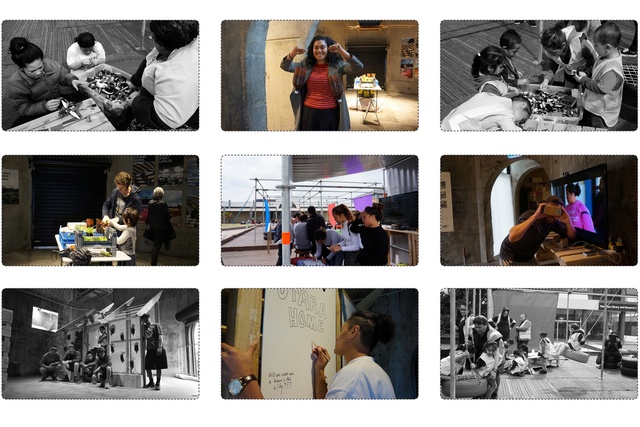
I also utilised technology as a digital connector to create a creative exchange of sorts between the two sites. It was something that I had an interest in and it morphed and opened up a whole wider set of questions about what we are really doing to support young people, marginalised people and creative culture without being too dictatorial. Often the architect does the formalised architecture, and they describe how you must use the space. So, I was trying to leverage that balance between formal and informal space. It was about having a physical framework where you provide a certain kind of structure or stimulus for people to react to, and then people can infill depending on their needs.
That fed into my first project with The Roots, The Portal project. It was also called the Housing Our People project. That was one site split over two locations as well: one in Manukau and then also Silo Park Wynyard Quarter. It wasn’t to do with supporting creative culture, but it was about addressing a far greater basic human need that we’re not satisfying, which is housing.

AC: The idea of an architect as someone who doesn’t prescribe the function of space feels like a shift away from some more traditional definitions of the profession. Do you see it that way? What do you see as the role of the architect in community making?
SG: I think you can’t underestimate the capacity of people when they want something – when they need something, when something’s not in place – to go out and build it or tack on to something that’s already there. In my thesis I had a whole toolkit, all these physical building materials, and I had a skeletal language. So, it was definitely still the articulation of space, and I was still mucking around with the ground plane and those types of things. It’s just knowing what the limitations are and when to pull back.
AC: I suppose it’s like when you’re doing urban planning or landscape architecture. There is a limit to how much you can anticipate the changing environment.
SG: It’s about how you catalyse, sow the seed, provide enough to excite someone about a place; things will just naturally evolve. As for the role of the architect, it’s all relative to your belief system and your context. I think the architect has a great opportunity and responsibility to improve the living conditions for everyone in the city, all citizens. Although one project will be tailored towards a client, there can’t be neglect. Above everything is the placemaking idea of creating connection to place. When people have a connection to place they generate a connection to each other.
I think architects can be agents of social change, and there is room to embrace that. We need to be way more accountable for ecological impacts. We could harness the indigenous knowledge, Te Ao Māori, and care a little bit more. But, you know [social change] is just one part of architecture and design. It’s also making practical spaces, safe spaces, beautiful spaces, spaces that have longevity and leave legacies.
AC: Now you’ve shifted to working at Cheshire Architects. What made you want to make the jump and what has it been like?
SG: It was a real timing thing. They were hiring for a recent graduate, I admired their work, I applied and was lucky enough to get the role. When I started I had pretty limited skills, whether that be software skills or documentation, all the practicalities of commercial architecture. And, I’m a bit energetic sometimes, so I think moving into a more structured environment was a really positive thing for my own development. It doesn’t mean I lose sight of my social convictions, you know, but it offers a counterpoint to that. It’s been a great learning process over the last couple of years. And what’s neat about Cheshire is having exposure to projects that are varied in typology and also scale. When I started I was involved with some streetscape work out at Catalina Bay in Hobsonville.
AC: Catalina Bay is a very social project, really, in terms of creating community and culture.
SG: Exactly. It’s creating an epicentre, a hub, and including amenities. It’s also trying to have a cross section of people living together and it has a rich heritage. It’s coming out of nothingness as well, which is quite interesting. And, doing the streetscape work aligned itself with my interest in public space-making. It is different to the activist role or reactionary architecture that we were doing at The Roots, but it’s a different way of learning.

The second thing I’ve been working on at Cheshire, pretty much what’s occupied this whole year, has been the Hotel Britomart project. It has been really cool seeing something actually coming together on the site. And, it’s been really wonderful for me to build up confidence because, before I came to Cheshire, I had no idea about many of these methodologies of creating detailed drawings and et cetera.
Laced within that big project, I’ve been involved with some smaller projects as well. I was involved with the team that’s just recently completed the fit out for the new Eat My Lunch grab and go store down at Britomart. It’s great to be able to partner with a social enterprise. And, I also just completed a small-format residential alteration for some lovely clients. I’m getting some good mentoring [at Cheshire], and I’m surrounded by some really talented designers. So, I have a lot of gratitude for that.
AC: How does this innate sense of social justice you have flow into your work at Cheshire?
SG: It is different work to The Roots, and I do think about that often. But, it doesn’t mean you surrender your value systems or your conviction about social design. If anything, I’m gathering all these artilleries and tools to make myself a more impactful designer. I think it’d be foolish to not take these opportunities I have at Cheshire. You don’t go in shouting and raising your fist, you know. It’s just about me having conversations with people about what I care about. There are a lot of really caring and committed people in the practice that also share similar world views. Besides social equality, I also love making beautiful things, which Cheshire is really good at.
AC: Outside of work, what have you been doing?
SG: In the last year, I’ve been investing time and energy into learning Te Reo Māori. I started doing the Kura Pō course at Unitec. They do 10 week blocks, and I did two lots of them. But, it’s only three hours contact time a week, so you have to put a lot more time in behind the scenes. I’m learning on my own with friends who are also interested. I would love to be fluent in five years but I don’t know if that’s too ambitious. It’s something that the office is keen on doing also, so we’re trying to really push that at the moment, which is great. I think everyone should have a good foundation of Māori.
AC: What are your hopes for the future of your work?
SG: I’m really happy where I am at the moment. The last two years have been fairly intensive. The more you learn, the more you realise you don’t know; it’s a bit daunting. But, I’m surrounded by some really neat people, being mentored, building trust. So, when I show that I’m moving up in my capabilities, I get more opportunities and responsibility. I haven’t travelled much, except around the South Pacific and to India, and that’s something I would like to do really extensively. And then ultimately, one day – everything is timing – I’d like to have my own practice, and to have that social focus at its core. I like the idea of having a consultancy as well as a research base, both accumulating knowledge and working alongside groups of people.
AC: Part of the On the Rise series is creating a mood board using Resene colours. Tell us what inspired your mood board.

SG: This mood board is simply a collection of materials that I have enjoyed using in recent years or components of projects that I’ve been involved with. I’ve partnered this with an assortment of colours to complete the composition. The oak timber, hand-made clay bricks and stone cuts are all found when dissecting The Hotel Britomart project. The low-fi strand board that is used in a recent residential alteration assumes a new life after being meticulously stain tested. And, finally, the polycarbonate screen and timber framing references the building kit of parts used both in my thesis and work with The Roots.
The material properties hope to capture a layering process, gradient in scale and textural and tonal shifts. Although, rather tangentially, I can imagine the lineal rhythm of the painted bands being a quiver of beautiful, single fin logs (surfboards), all perched against a wall.
AC: What kind of advice would you give to those thinking of becoming architects or studying architecture?
SG: I went through so much self doubt. I made mistakes. But, I think it takes those failings, those mistakes, to regather a sense of what you care about. It’s super labour intensive, but it’s also super fulfilling. I think you just have to have perseverance and literally just continue. It’s not all perfect, but just keep going. I don’t know if it takes a blind belief, but somehow everything gets worked out. It’s about the relationships you create with others and you collectively move through it together.
Read other interviews from the On the Rise series here.


